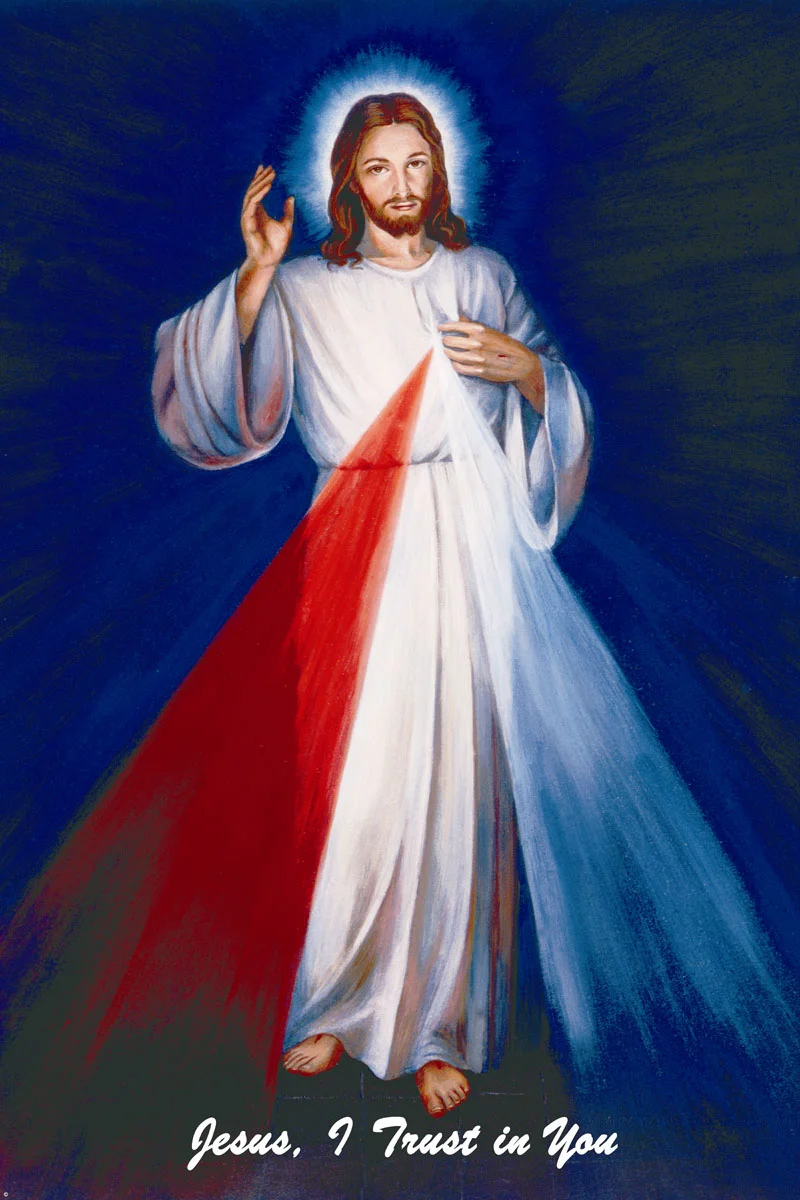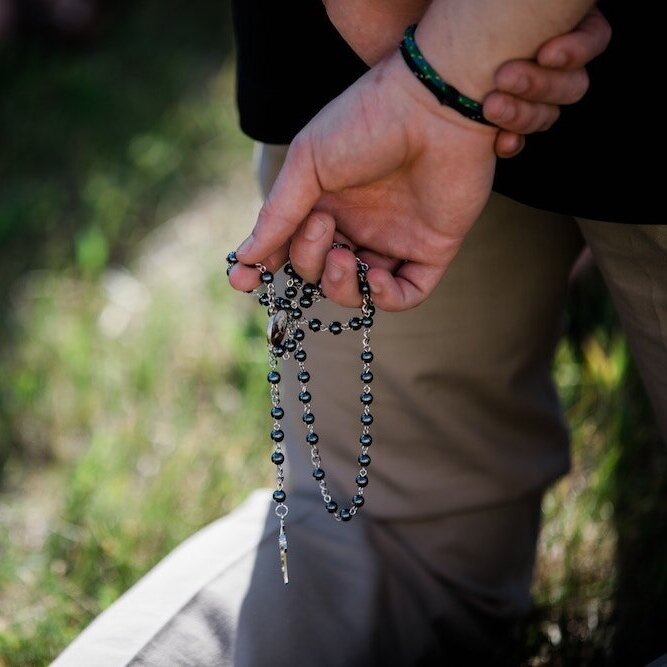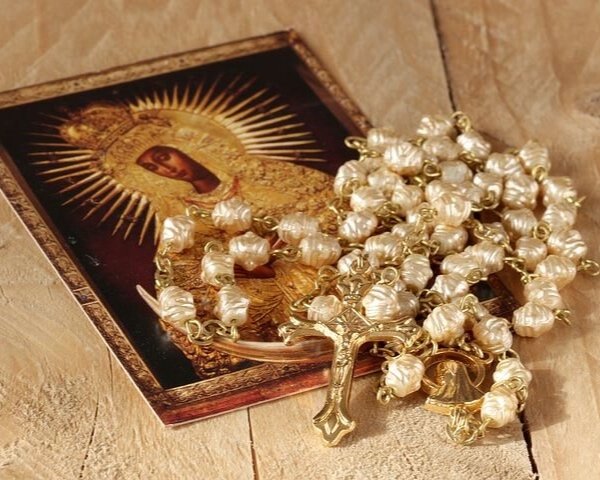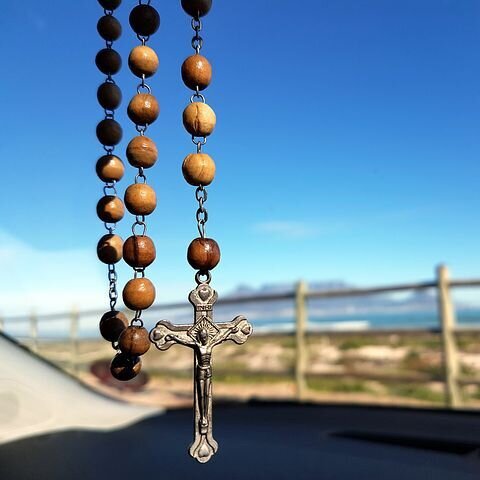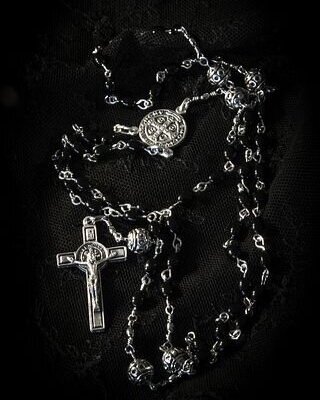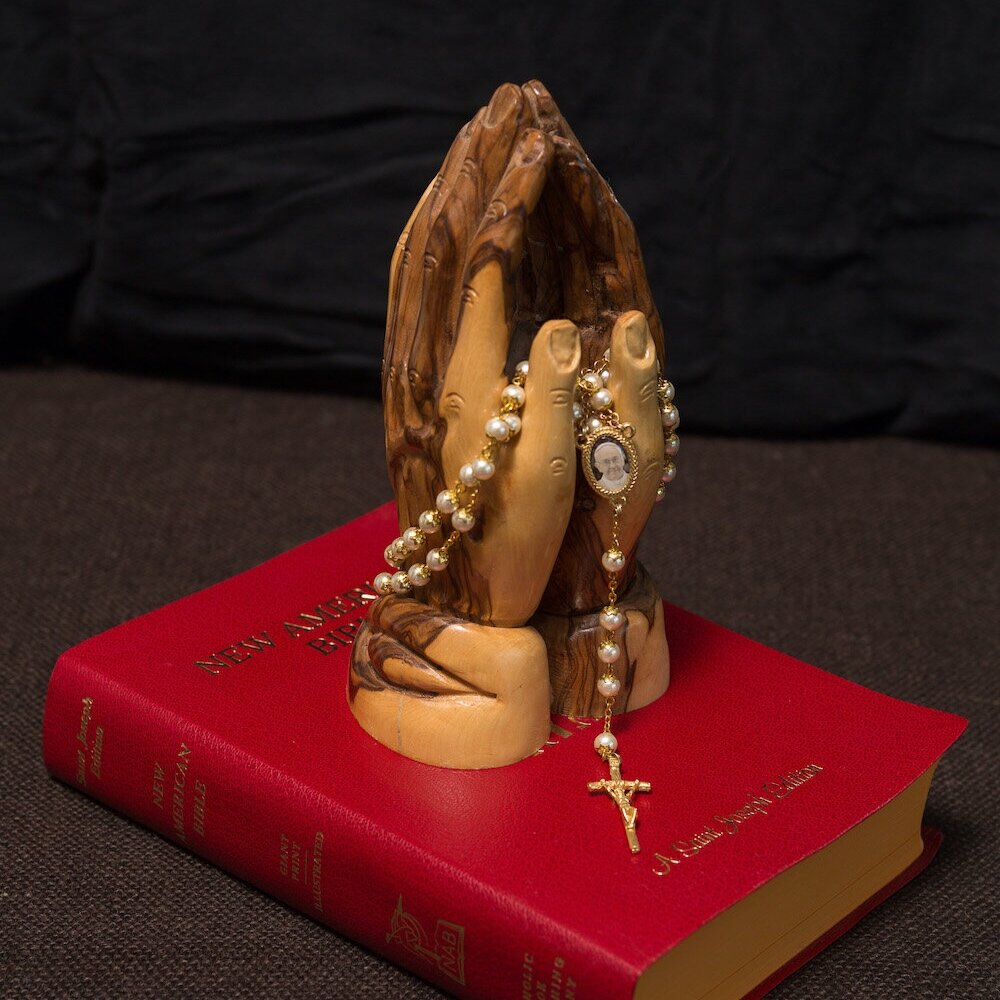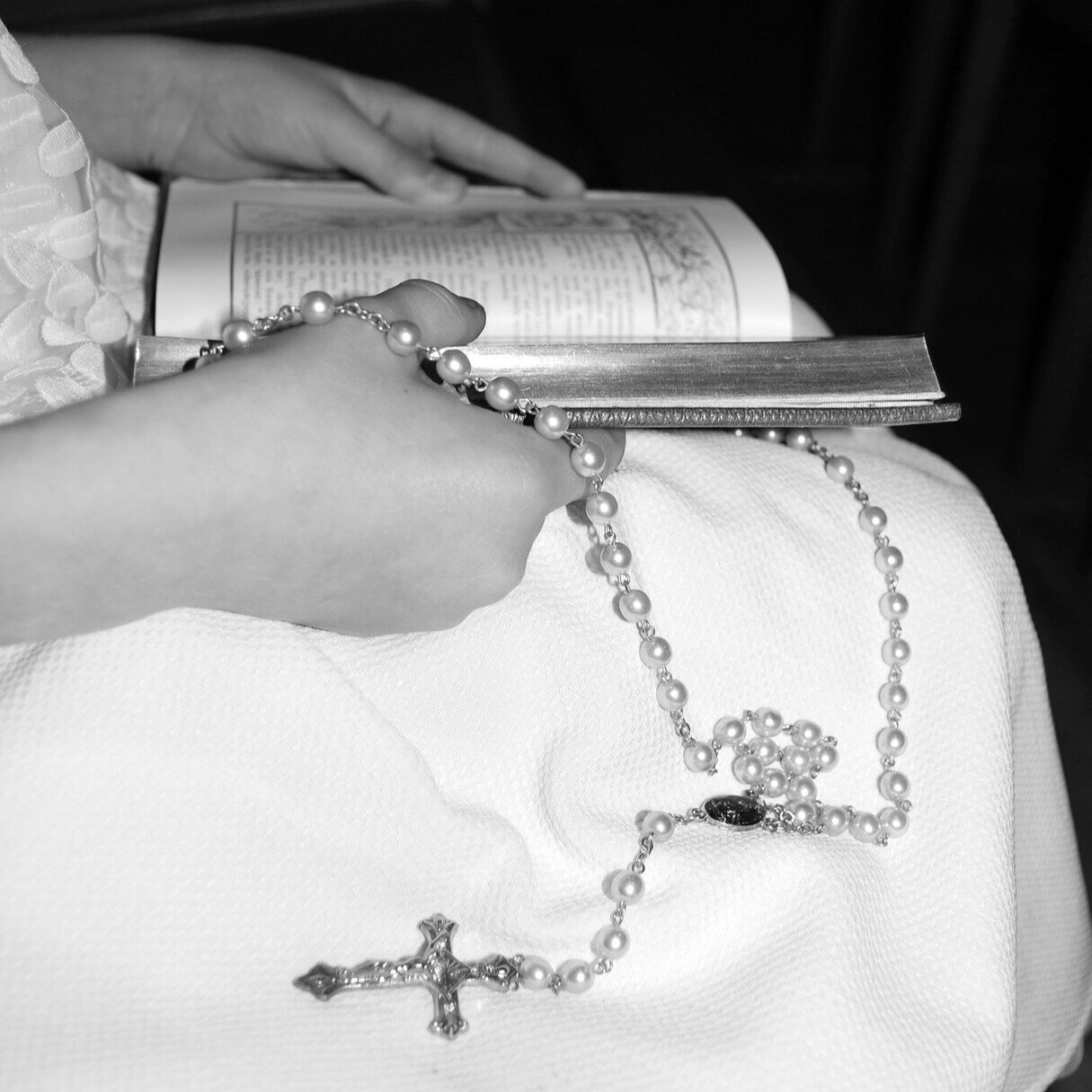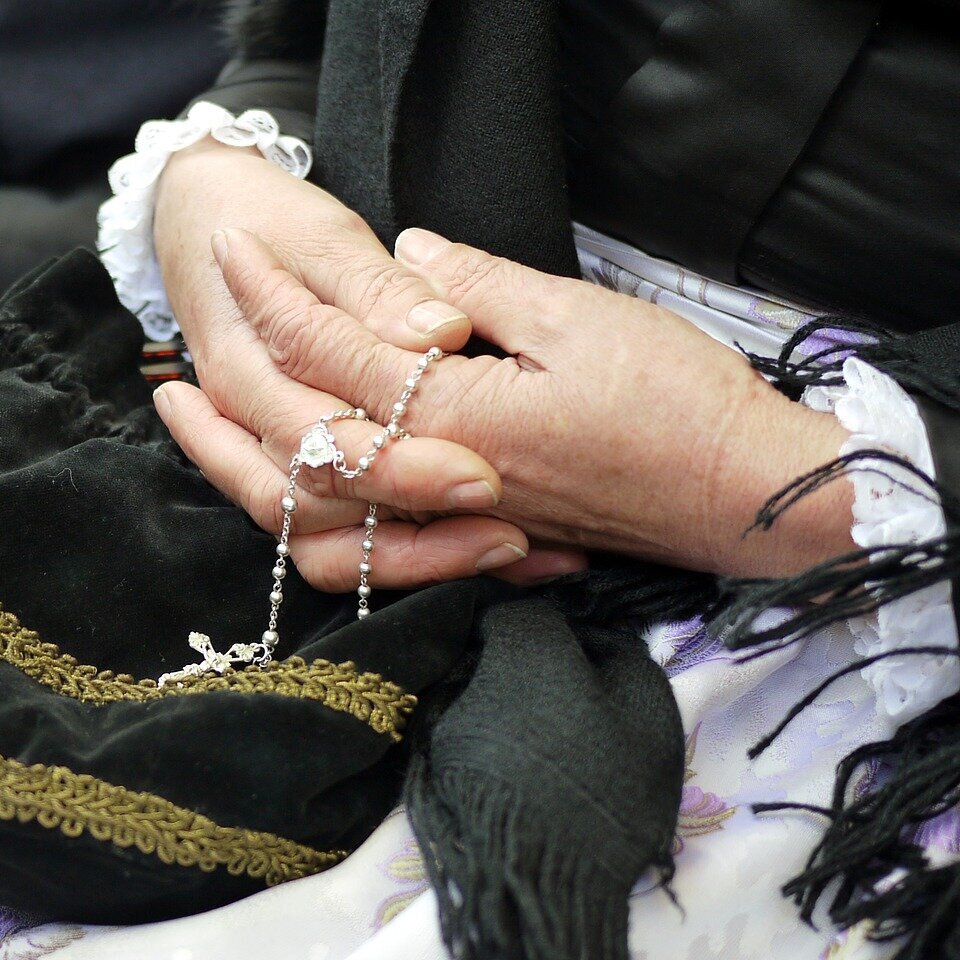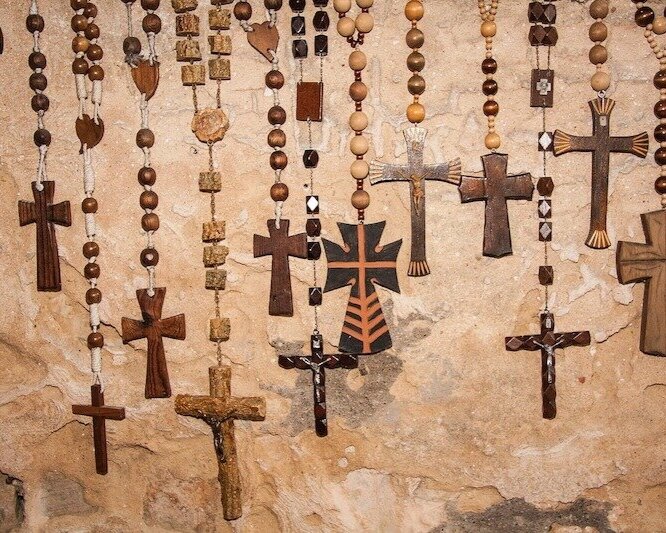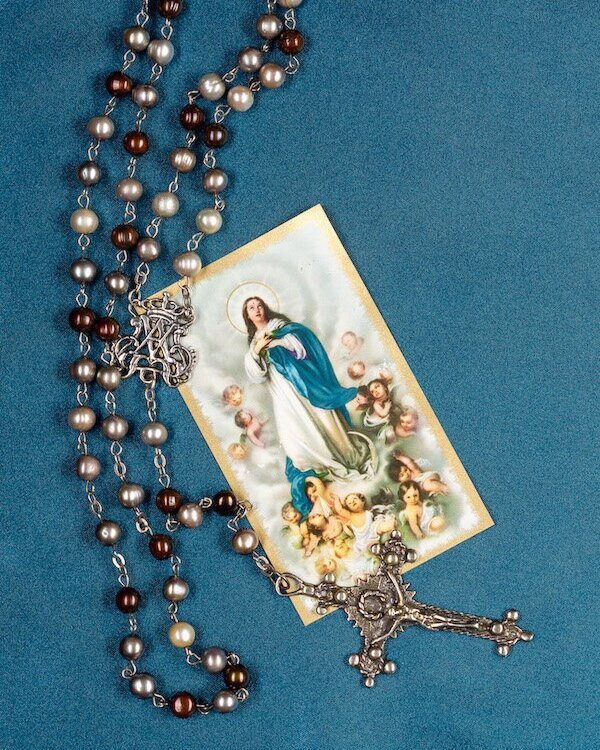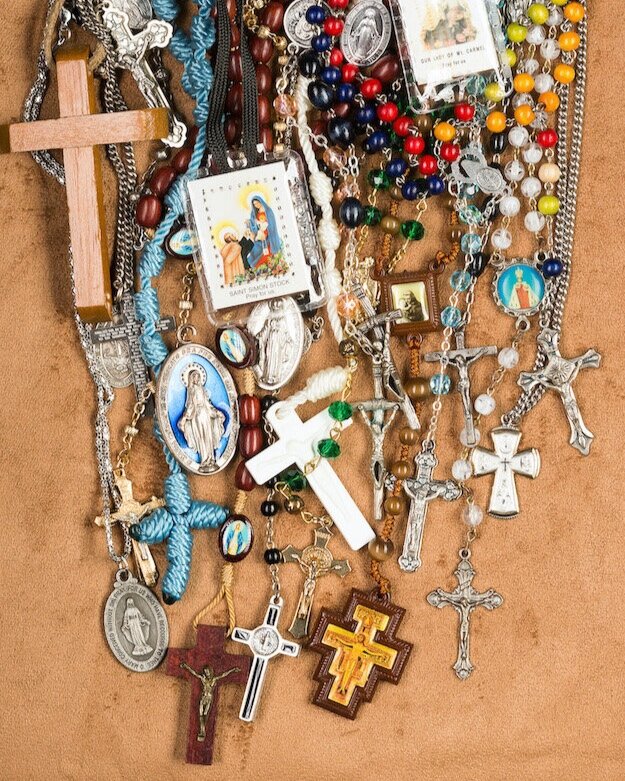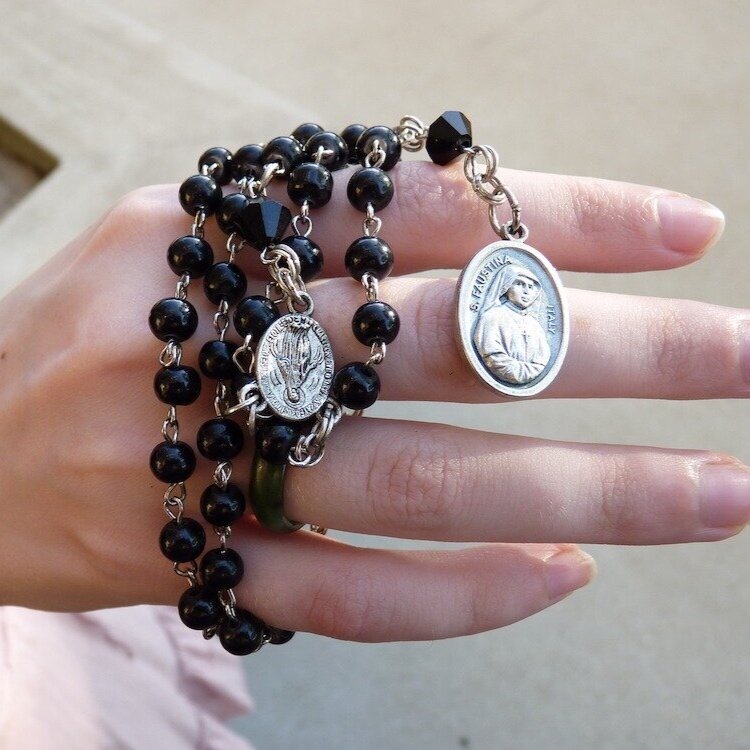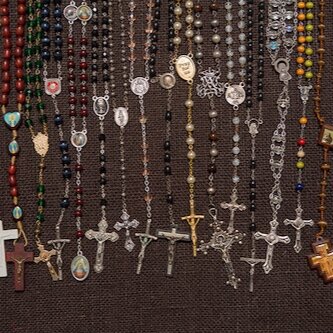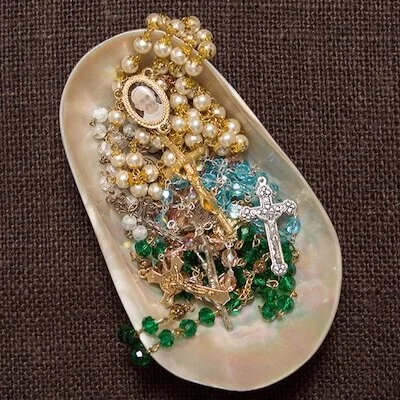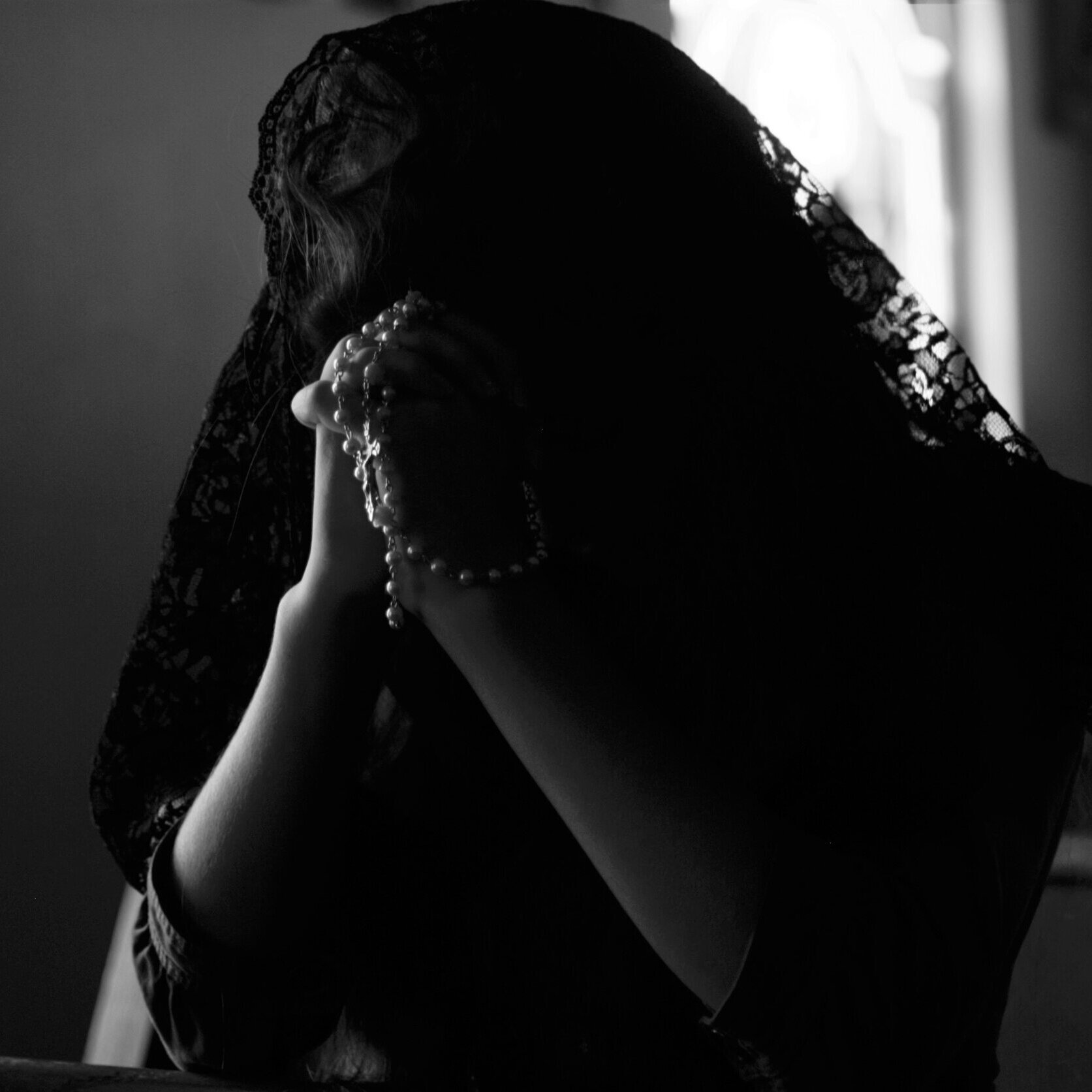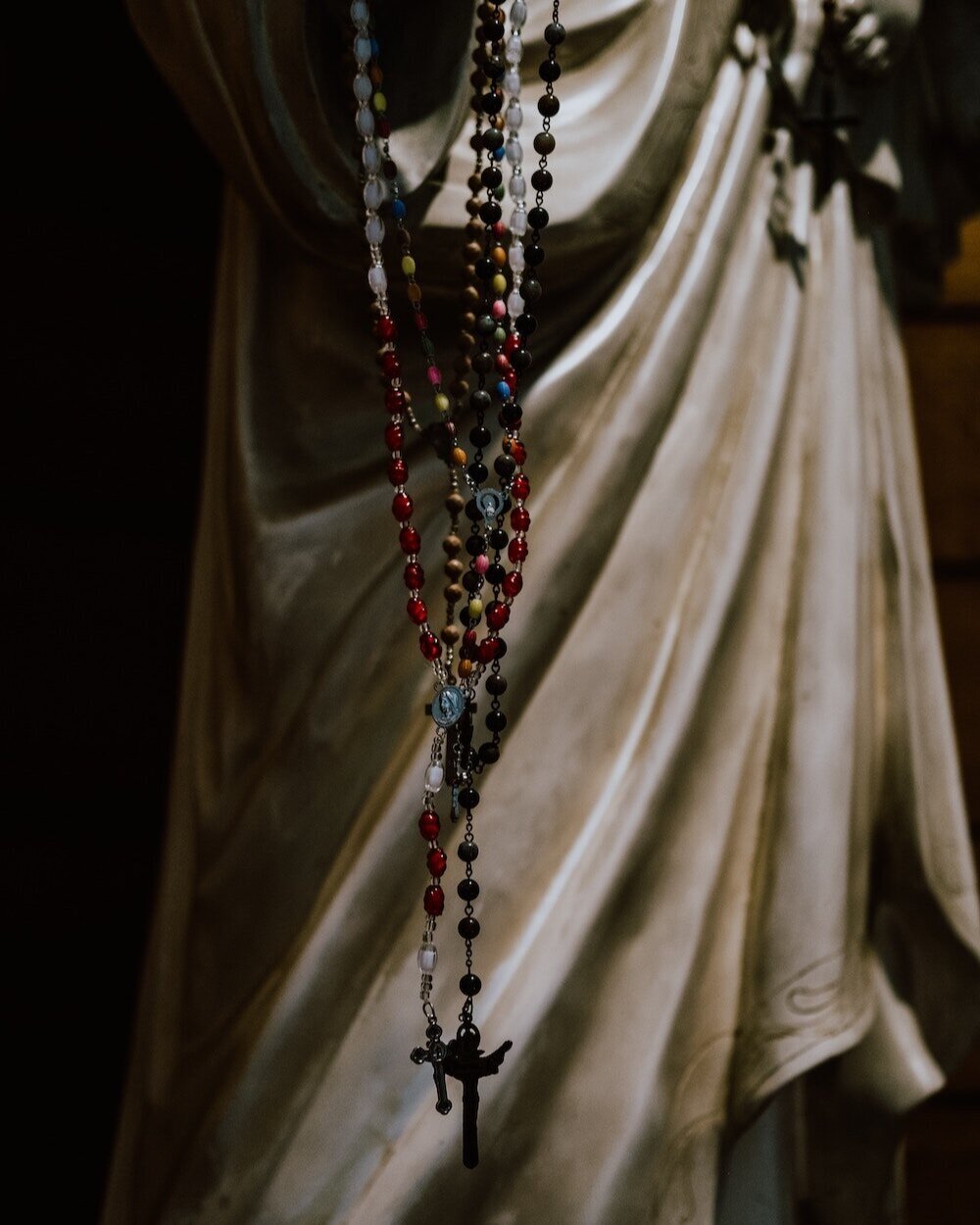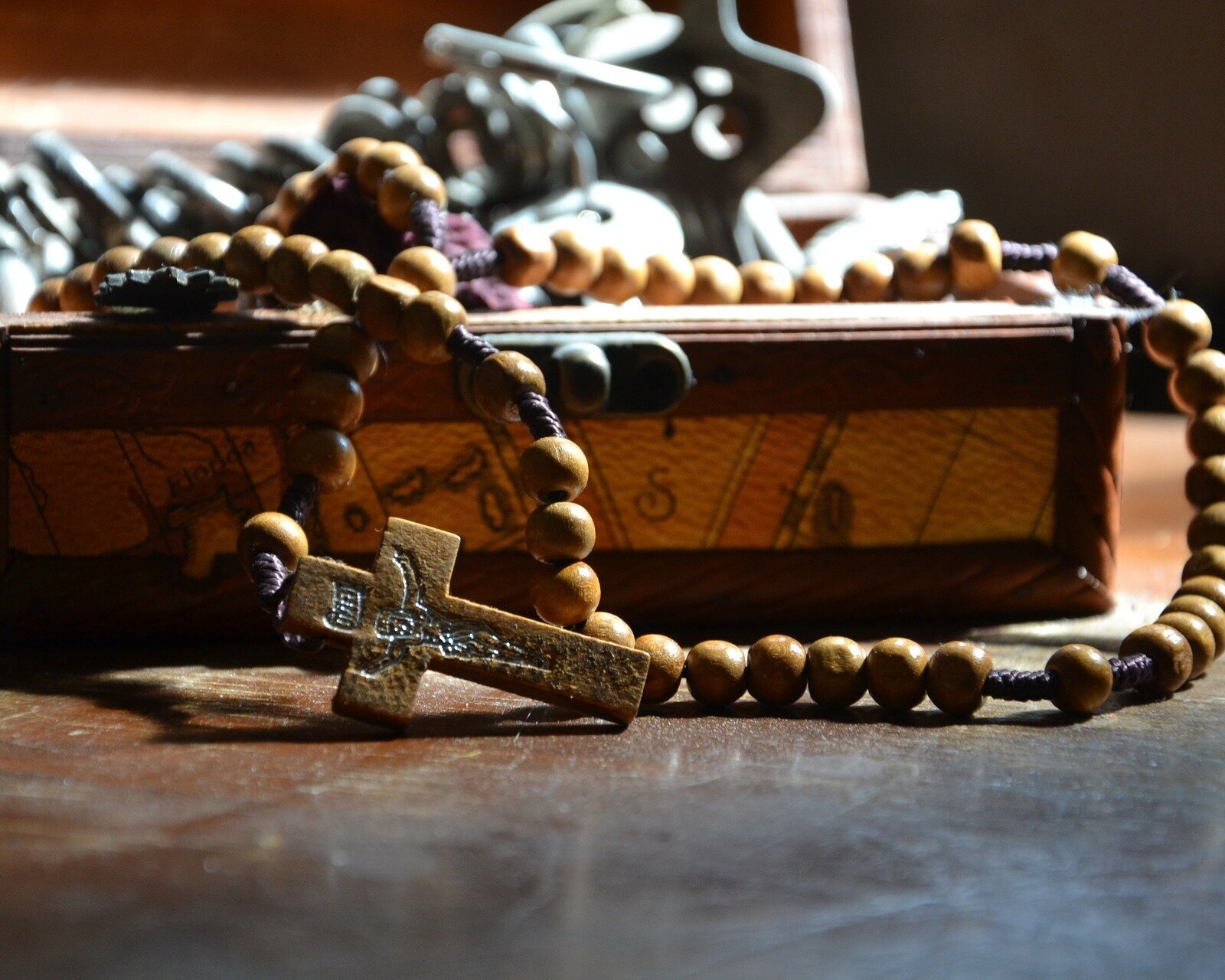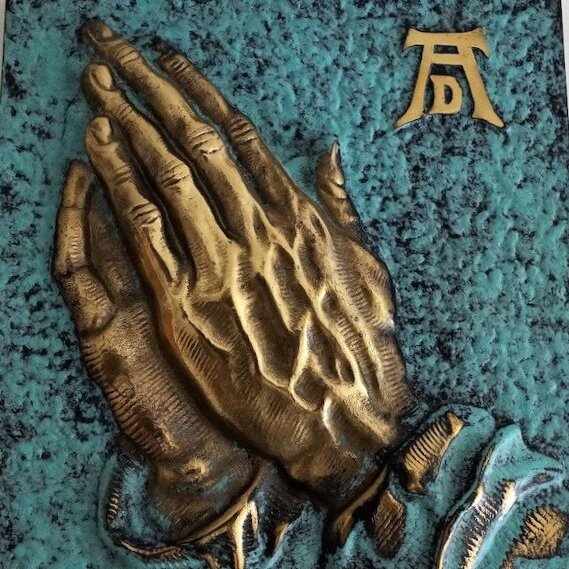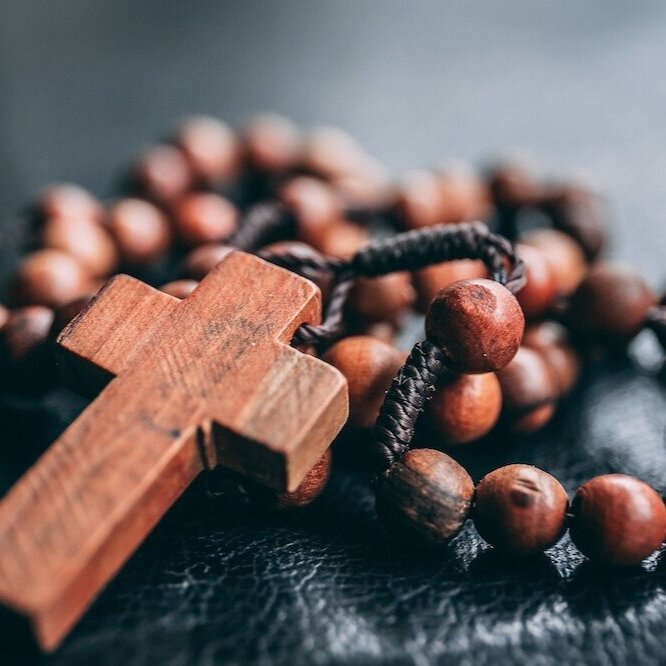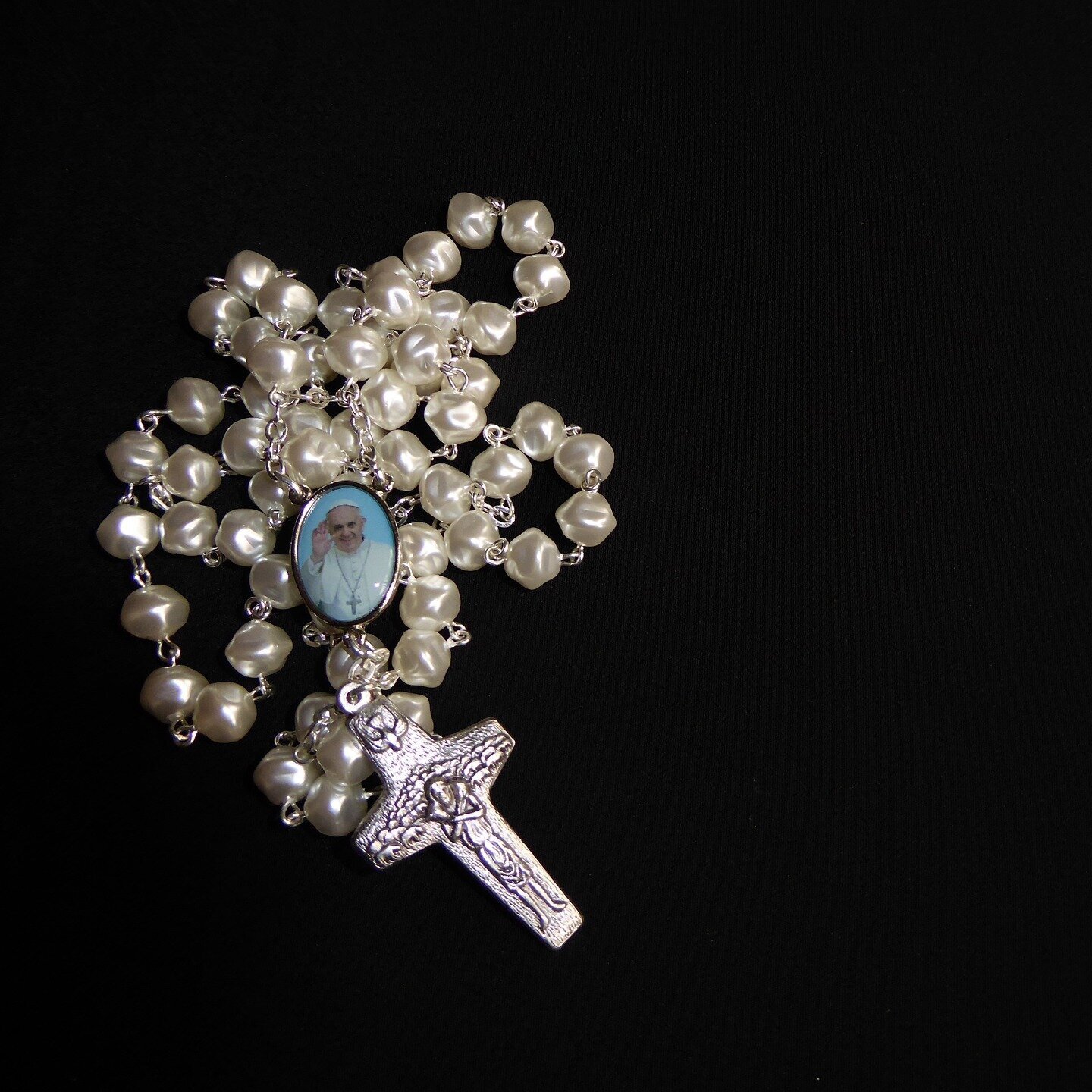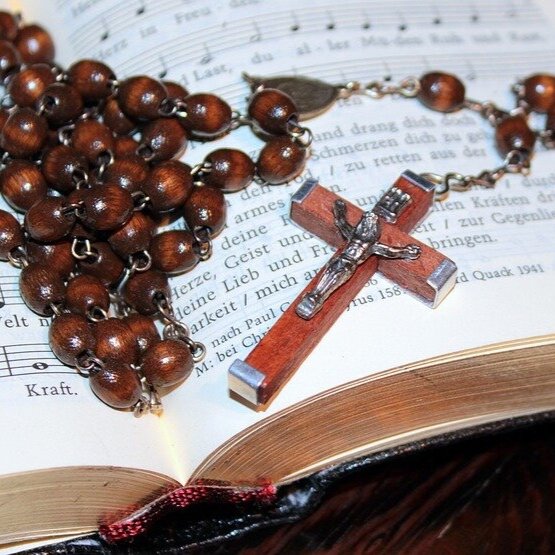"The rosary is the book of the blind, where souls see and there enact the greatest drama of love the world has ever known; it is the book of the simple, which initiates them into mysteries and knowledge more satisfying than the education of other men; it is the book of the aged, whose eyes close upon the shadow of this world, and open on the substance of the next. The power of the rosary is beyond description."
-- Venerable Archbishop Fulton Sheen
A Brief History of the Rosary
The Rosary is a Marian devotion that uses a set of beads to count prayers during its recitation. Since the establishment of monastic orders, it was common practice to use beads and pebbles to count repetitions of prayers such as the Our Father and the Hail Mary, which both come directly from the Bible. Many attribute the origins of the Rosary devotion to Saint Dominic. It is believed that an apparition of the Blessed Mother visited him in 1214 and told him to spread the Angelic Psalter (the recitation of 150 Hail Marys) for the conversion of souls. Popular during Dominic’s lifetime, this devotion became neglected a century later, but around 1460 it was revived and enhanced by Blessed Alan de la Roche again under the direction of Mary. Over the next century the devotion of the Rosary evolved with additions and changes in its recitation into what we have today. The Secret of the Rosary, written by Saint Louis de Montfort sometime before his death in 1716, is a powerful book explaining the history, significance, and power of the Rosary. Lost during the French Revolution, the manuscript was finally rediscovered in 1842, but not printed until 1911.
Essentials of the Rosary
Sometimes called the "Bible on a String," the Rosary is a beautiful, ancient meditation of the Church dating back to the 13th century that uses beads to help count out prayers including the Our Father and Hail Mary. The required prayers involved in reciting the rosary are the: 1) Our Father, 2) Hail Mary, 3) Apostle's Creed, 4) Glory Be, and 5) Hail Holy Queen. Many also include the Fatima Prayer between decades. All prayers are either scripturally or thematically based. Additionally, the rosary is divided into decades or groups of ten prayers. Each decade is dedicated to a mystery of the life of Jesus. There are 4 groups of mysteries: 1) Joyful, 2) Glorious, 3) Sorrowful, and 4) Luminous. Use the button below to get more detailed information on how to pray the rosary.
Prayers of the Rosary
The Mysteries of the Rosary
When you begin praying the rosary, you should be mindful of its meditative benefit. Each day you will reflect on a different part of the life of Jesus with each of the five decades devoted to a different mystery within that portion of the life of Christ. Originally the church set up three sets of mysteries that reflected on:
1. The early life of Jesus (called the Joyful Mysteries),
2. The Passion of Jesus (called the Sorrowful Mysteries), and
3. The heavenly life of Jesus (called the Glorious Mysteries).
In 2002, Pope John Paul II proposed a fourth set of mysteries that encompassed the earthly ministry of Jesus (called the Luminous Mysteries). According to his suggestion, the four sets of mysteries may be prayed on the following days:
1. The Joyful Mysteries on Monday and Saturday, and Sundays during Advent,
2. The Sorrowful Mysteries on Tuesday and Friday, and Sundays during Lent,
3. The Glorious Mysteries on Wednesday and Sunday,
4. The Luminous Mysteries on Thursday.
The Early Life of Jesus Christ
In the sixth month the angel Gabriel was sent by God to a town in Galilee called Nazareth, to a virgin engaged to a man whose name was Joseph, of the house of David. The virgin’s name was Mary. And he came to her and said, “Greetings, favored one! The Lord is with you.”
(Luke 1:26-28, NRSVCE)
Fruit of the Mystery: Humility
When Elizabeth heard Mary’s greeting, the child leaped in her womb. And Elizabeth was filled with the Holy Spirit and exclaimed with a loud cry, “Blessed are you among women, and blessed is the fruit of your womb.
(Luke 1:41-42, NRSVCE)
Fruit of the Mystery: Love of Neighbor
And she gave birth to her firstborn son and wrapped him in bands of cloth, and laid him in a manger, because there was no place for them in the inn.
(Luke 2:7, NRSVCE)
Fruit of the Mystery: Poverty
When the time came for their purification according to the law of Moses, they brought him up to Jerusalem to present him to the Lord (as it is written in the law of the Lord, “Every firstborn male shall be designated as holy to the Lord”).
(Luke 2:22-23, NRSVCE)
Fruit of the Mystery: Obedience
After three days they found him in the temple, sitting among the teachers, listening to them and asking them questions.
(Luke 2:46, NRSVCE)
Fruit of the Mystery: Joy in finding Jesus
The Passion of Jesus Christ
In his anguish he prayed more earnestly, and his sweat became like great drops of blood falling down on the ground. When he got up from prayer, he came to the disciples and found them sleeping because of grief, …
(Luke 22:44-45, NRSVCE)
Fruit of the Mystery: Sorrow for Sin
Then Pilate took Jesus and had him flogged.
(John 19:1, NRSVCE)
Fruit of the Mystery: Purity
They stripped him and put a scarlet robe on him, and after twisting some thorns into a crown, they put it on his head. They put a reed in his right hand and knelt before him and mocked him, saying, “Hail, King of the Jews!”
(Matthew 27:28-29, NRSVCE)
Fruit of the Mystery: Courage
... and carrying the cross by himself, he went out to what is called The Place of the Skull, which in Hebrew is called Golgotha.
(John 19:17, NRSVCE)
Fruit of the Mystery: Patience
Then Jesus, crying with a loud voice, said, “Father, into your hands I commend my spirit.” Having said this, he breathed his last.
(Luke 23:46, NRSVCE)
Fruit of the Mystery: Perseverance
The Heavenly Life of Jesus Christ
But he said to them, “Do not be alarmed; you are looking for Jesus of Nazareth, who was crucified. He has been raised; he is not here. Look, there is the place they laid him.
(Mark 16:6, NRSVCE)
Fruit of the Mystery: Faith
So then the Lord Jesus, after he had spoken to them, was taken up into heaven and sat down at the right hand of God.
(Mark 16:19, NRSVCE)
Fruit of the Mystery: Hope
All of them were filled with the Holy Spirit and began to speak in other languages, as the Spirit gave them ability.
(Acts 2:4, NRSVCE)
Fruit of the Mystery: Love of God
Rise up, O Lord, and go to your resting place, you and the ark of your might.
(Ps 132:8, NRSVCE)
Fruit of the Mystery: Grace of a Happy Death
A great portent appeared in heaven: a woman clothed with the sun, with the moon under her feet, and on her head a crown of twelve stars.
(Revelation 12:1, NRSVCE)
Fruit of the Mystery: Trust in Mary's Intercession
The Earthly Ministry of Jesus Christ
And when Jesus had been baptized, just as he came up from the water, suddenly the heavens were opened to him and he saw the Spirit of God descending like a dove and alighting on him. And a voice from heaven said, “This is my Son, the Beloved, with whom I am well pleased.”
(Matthew 3:16-17, NRSVCE)
Fruit of the Mystery: Openness to the Holy Spirit
His mother said to the servants, “Do whatever he tells you.” Now standing there were six stone water jars for the Jewish rites of purification, each holding twenty or thirty gallons. Jesus said to them, “Fill the jars with water.” And they filled them up to the brim.
(John 2:5-7, NRSVCE)
Fruit of the Mystery: To Jesus through Mary
As you go, proclaim the good news, ‘The kingdom of heaven has come near.’ Cure the sick, raise the dead, cleanse the lepers, cast out demons. You received without payment; give without payment.
(Matthew 10:7-8, NRSVCE)
Fruit of the Mystery: Repentance and Trust in God
And while he was praying, the appearance of his face changed, and his clothes became dazzling white. … Then from the cloud came a voice that said, “This is my Son, my Chosen; listen to Him!”
(Luke 9:29, 35, NRSVCE)
Fruit of the Mystery: Desire for Holiness
Then he took a loaf of bread, and when he had given thanks, he broke it and gave it to them, saying, “This is my body, which is given for you. Do this in remembrance of me.” And he did the same with the cup after supper, saying, “This cup that is poured out for you is the new covenant in my blood.
(Luke 22:19-20, NRSVCE)
Fruit of the Mystery: Adoration
The Divine Mercy Chaplet
Another powerful prayer that can be said using rosary beads is the Divine Mercy Chaplet. The image below shows how to pray the chaplet:
For more information on this powerful prayer and its history please visit:



































